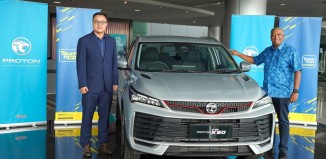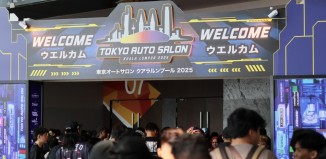Test Drive Review : Volkswagen Tiguan 1.4 TSI
We had covered the launch of the locally assembled 2nd generation Volkswagen Tiguan (details in this link) so here is a quick recap of the 2 variants (Comfortline and Highline) and how they drive.
What they have in common is the 1.4-liter TSI turbocharged engine paired with a 6-speed wet dual clutch DSG (Direct Shift Gearbox). This engine produces 148 hp and 250 Nm of torque for the front wheels. Now, those familiar with Volkswagens might find it strange that a transmission usually reserved for high torque applications, like the Golf GTI, is mated to a small engine.
This move is mainly to allay concerns with the 7-speed dry DSG. Furthermore, the 6-speed transmission is sturdier and holds up better to the Malaysian driving style and traffic condition.
What’s different between the 2 variants externally are slight but distinct; the most distinct being the LED headlamps with Dynamic Cornering Assist and daytime running lights found on the Highline variant. This headlamp has a visually slimmer appearance than the halogen headlamps of the Comfortline. The Highline also gets a bit more chrome in the front grille, and larger wheels (18″ vs 17″ for the Comfortline).
When viewed from the rear however, the only tell-tale difference is the color of the roof rails i.e. the Comfortline’s is black; the Highline’s, silver, as both variants use LED tail lamps.
But get inside both variants and you’ll see the differences and where the extra money is spent. The Highline gets a lot of goodies like leather seats and trim, smart entry and keyless start, powered driver’s seat with memory, 3-zone climate control, cruise control, etc. The most noteworthy features in the Highline are the crisp 12.3″ color digital instrument cluster, the 8″ Discover Media touchscreen and navigation system (with reverse camera view and which also keeps a Blue, or green, score to help you drive efficiently), Park Assist 3.0 that auto steers the Tiguan for parallel or perpendicular parking (and exit), as well as a powered tailgate. The Highline’s media system also has an optional App Connect upgrade that puts Android Auto, Apple CarPlay and MirrorLink in the Tiguan for added functionality.
The Comfortline makes do with fabric seats, automatic headlamps, rain-sensing wipers, 8″ Composition Media touchscreen system (no option for App Connect function) and Park Distance Control.
On the bright side, Volkswagen has kitted both with a leather multi-function steering wheel complete with paddle shifters, electric parking brake with auto hold, personalized driver settings, Driver Alert System, and a very useful and functional 4-position rear seat-back tray table with retractable cup holder.
The tray not only holds items like food and stationery, it can be angled to rest a tablet or phablet on making it practical for children and adults alike. The cabin’s storage functionality increases with its deep door pockets as well as cubby holes on either side of the rear seat bench. The rear seat has a 40:20:40 fold and can increase the cargo space to 1,655 liters, from 615 liters (which is more than many sedans); the 60:40 rear bench also slides fore & aft for more cabin flexibility.
So how does this longer and wider new Tiguan drive? In short, very well when compared to its Asian peers in this price bracket. The Tiguan is built on the versatile MQB platform that’s used for the Golf Mk7 and Audi Q3. And being 50 kg lighter over its predecessor helps keeps the 1.4-liter TSI engine peppy for short sprints.
Steering response is car-like and precise which gives the driver greater confidence on the road. On the winding country roads, the Tiguan was admirable in the way it held its composure (at speed) through the corners. The brakes too held its own well with a reassuring bite when it was needed in quite a few obstacle avoidance moves. Some body roll is inescapable due to the taller crossover body but it’s the most surefooted of the bunch; we had 3 Asian crossovers / SUVs to benchmark against the Tiguan through slalom and tight turn courses.
The Tiguan 1.4 TSI is priced at RM 148,990 and RM 168,990 for the Comfortline and Highline respectively (on the road without insurance and registration). This includes a 5-year factory warranty and 5 years’ free roadside assistance; with service interval at 15,000 km.
While its pricing is at the higher end of the spectrum (equivalent to rival high-spec AWD models), it makes up for it in the relatively more premium feel, comfort and ride qualities, as well as fancy equipment. It’s also the only turbocharged model in its segment, with the smaller engine allowing for cheaper road tax. For its intended buyers, few will reap full benefits of all-wheel drive anyway and a 2-wheel drive configuration is lighter and returns better fuel economy. On our drive, which included some aggressive runs as well as long idling times, we recorded an average consumption of 9.2 liters per 100 km.
The Tiguan is a more family-oriented vehicle (you can get a Golf hatchback for this price) and will see more school runs than drag strips, despite its handling capabilities. But why build it to handle so capably? If you’re buying it to ferry your “precious cargo” a.k.a. family, wouldn’t you want it to?
Gallery:


































































